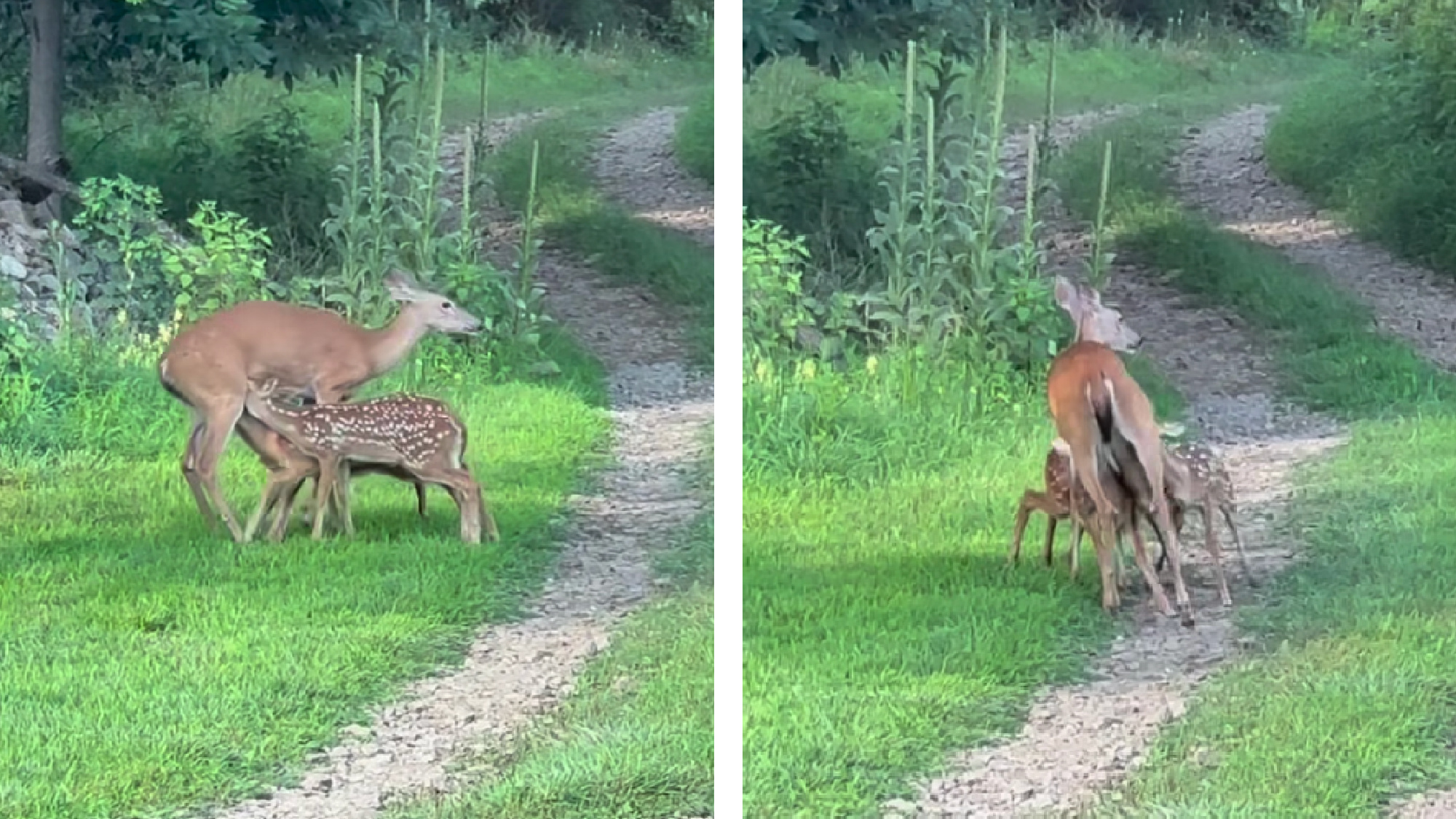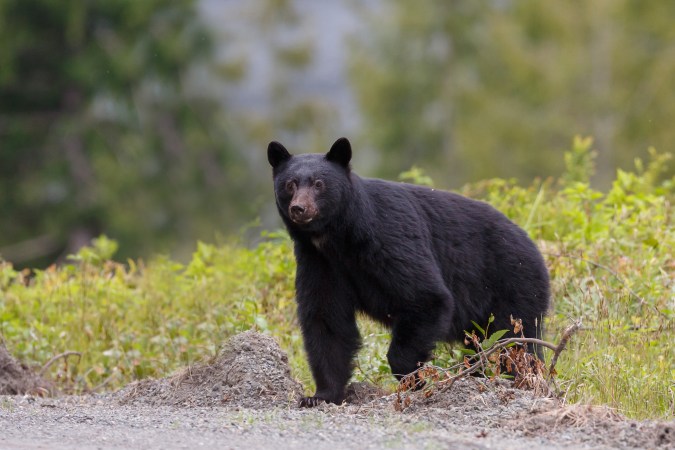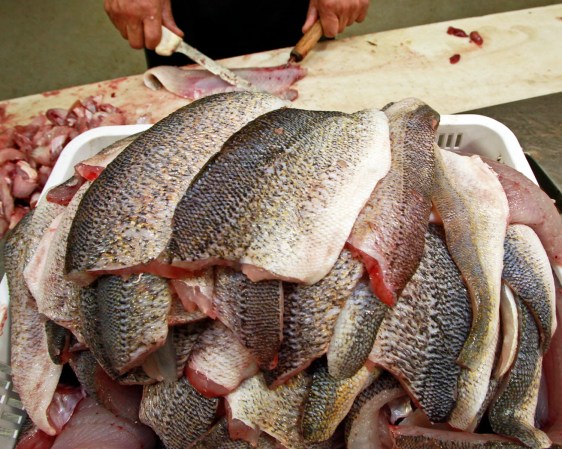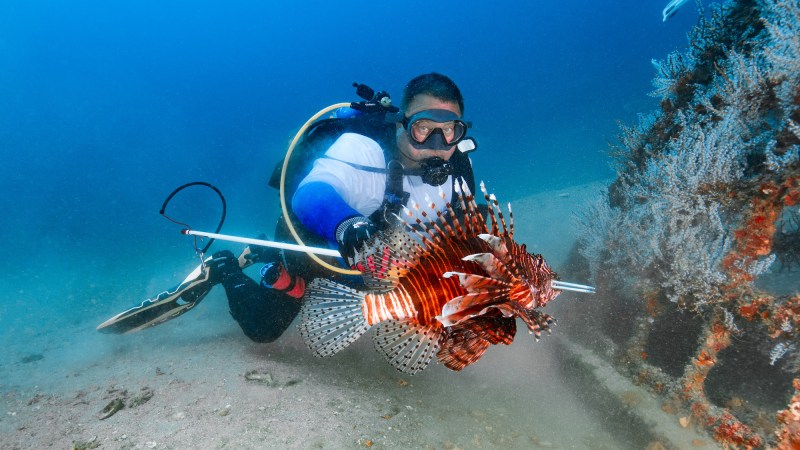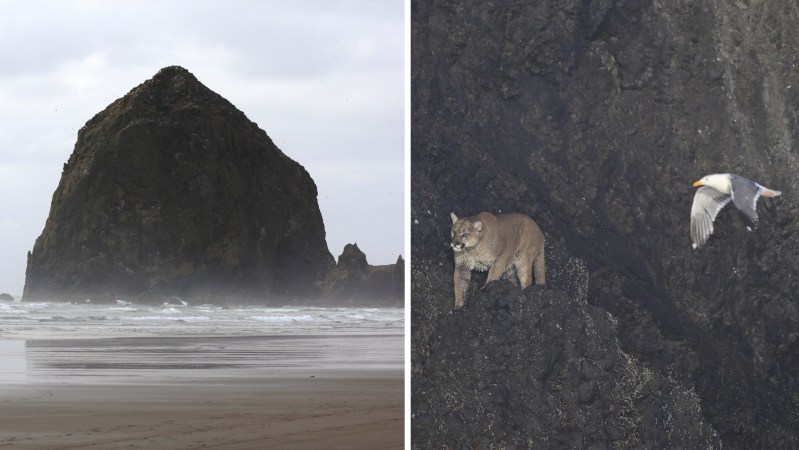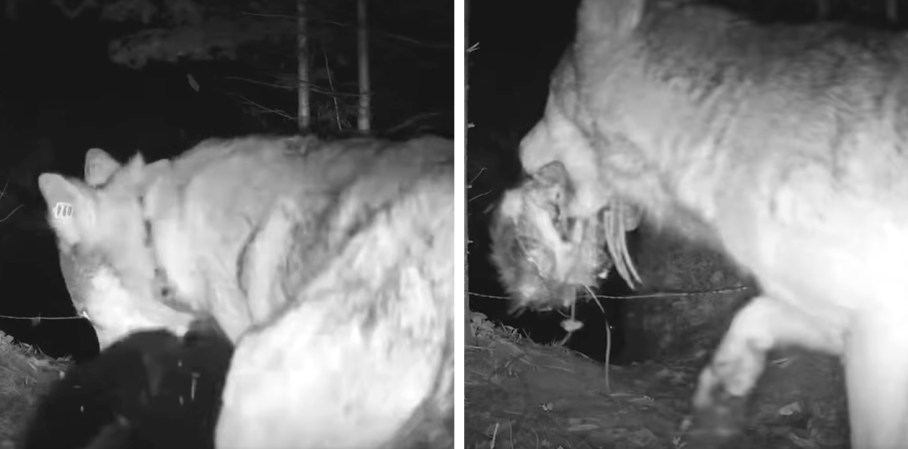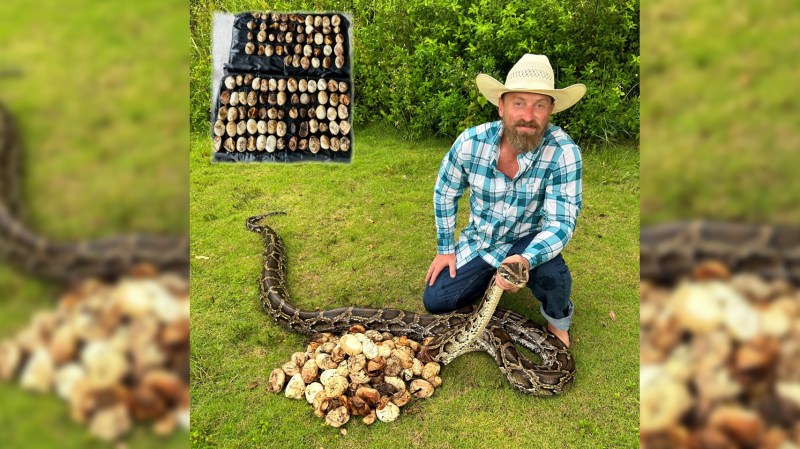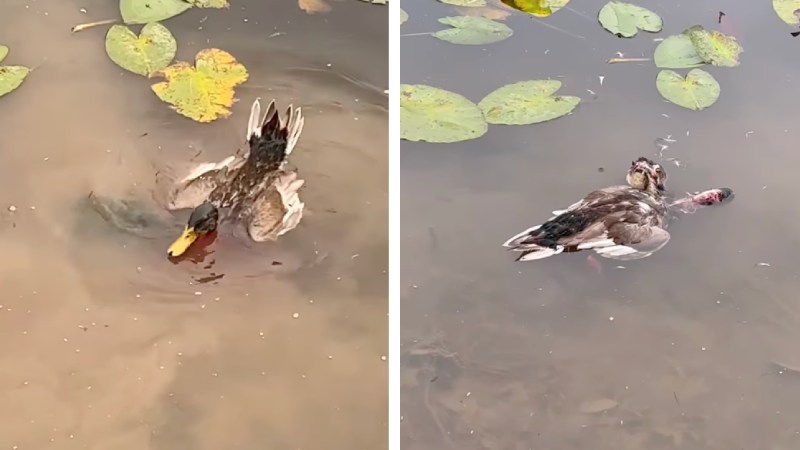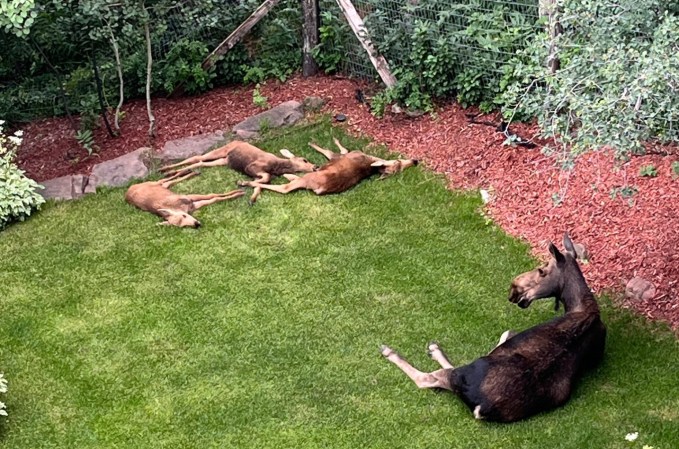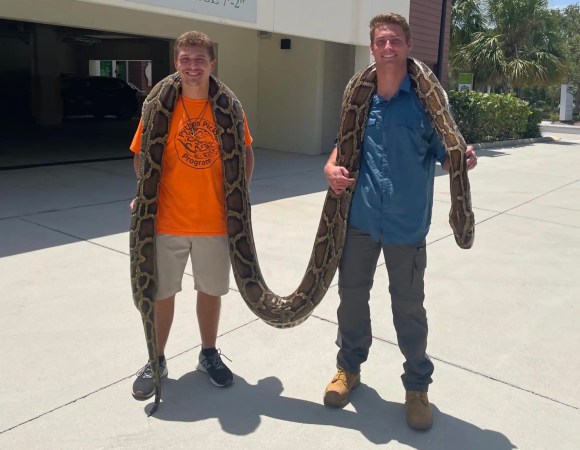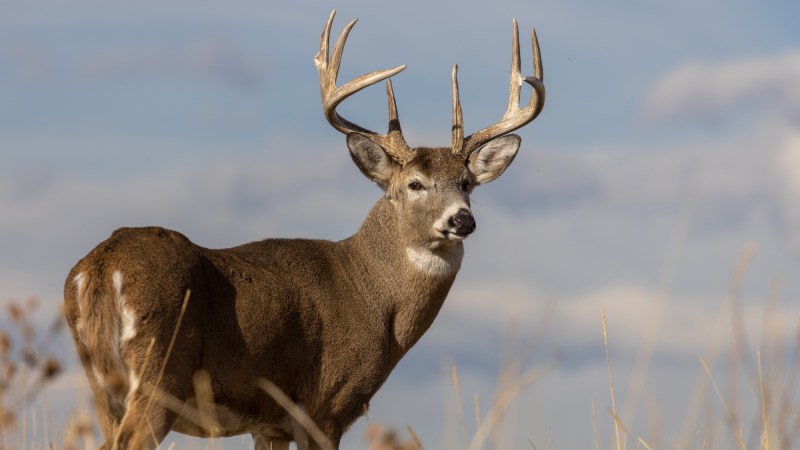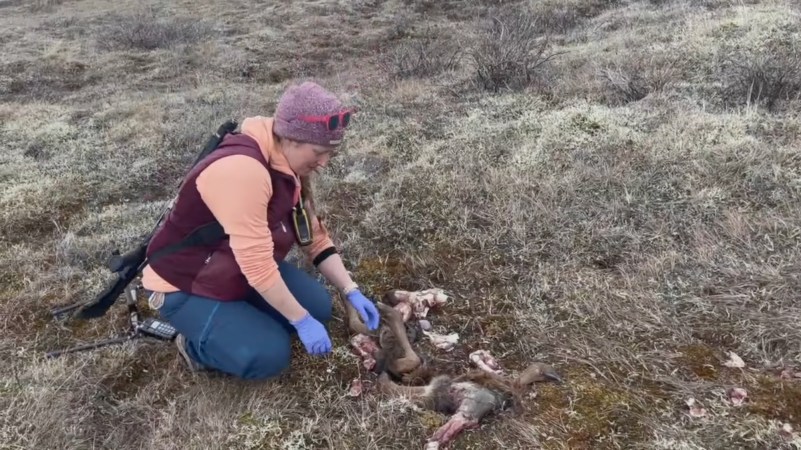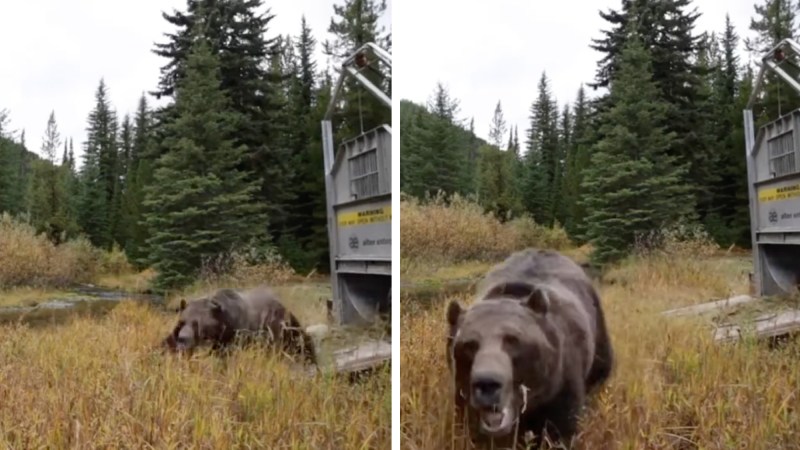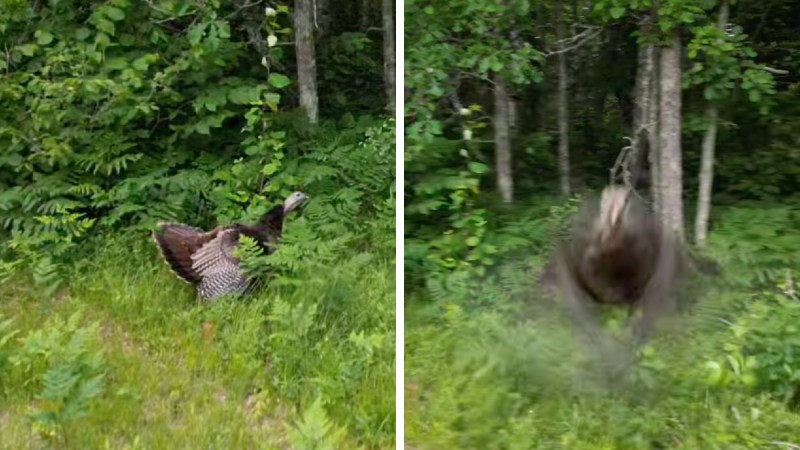A goat sanctuary in New Jersey posted a rare non-goat video to their social media profiles on July 20 that instantly went viral, amassing 7.6 million views on Facebook in two weeks. The footage documented a whitetail doe stumbling around in a grassy area while three spotted fawns scooted under her body, all vying for milk.
At first, it’s hard to tell how many fawns are standing under the doe’s long legs. But as she turns and trips over them, three necks and three sets of ears become visible, all reaching up to the same teats. The doe keeps turning and scooting away and shakes two of the fawns. But one clings on like velcro and eventually walks away with her while the other two trail them.
“My actual nightmare,” one commenter wrote on the Instagram post. “Props to mom.”
Aside from being just another cute wildlife video, the footage raises a question: How rare is it for a whitetail doe to give birth to triplets in the wild?
Twin fawns are a welcome sight for any wildlife enthusiast. They’re more common among older does, while younger does usually just produce one fawn. Triplets are much less likely and, therefore, all the more captivating.
According to a study the Pennsylvania Game Commission conducted from 1999 to 2006, 125 of 6,253 road-killed does were carrying triplet embryos at the time of impact. That accounts for 2 percent of the sample size, making deer far more likely to carry triplets than humans. (Only 80 out of every 100,000 human births in the U.S. are triplets or larger, according to the Centers for Disease Control and Prevention, which calculates out to .08 percent.)
Read Next: Pregnant Whitetail Doe Gets Hit by a Truck and Gives Birth on Impact
Pennsylvania deer biologists point out that not all embryos recorded in the roadkill study would have necessarily survived birth, which means the triplet birth rate itself is likely lower. But still, that’s a lot of three-way splits.
The triplets in this video were likely born in May or June. They still have their spots, and probably will for another four or five months. If the birth went normally, the fawns should have started eating increasing amounts of forage after two weeks of a milk-only diet. Depending on the exact date they were born, they were probably close to weaning off milk entirely when the footage was captured. This happens anywhere from 10 weeks to four months of age, according to the National Deer Association.

